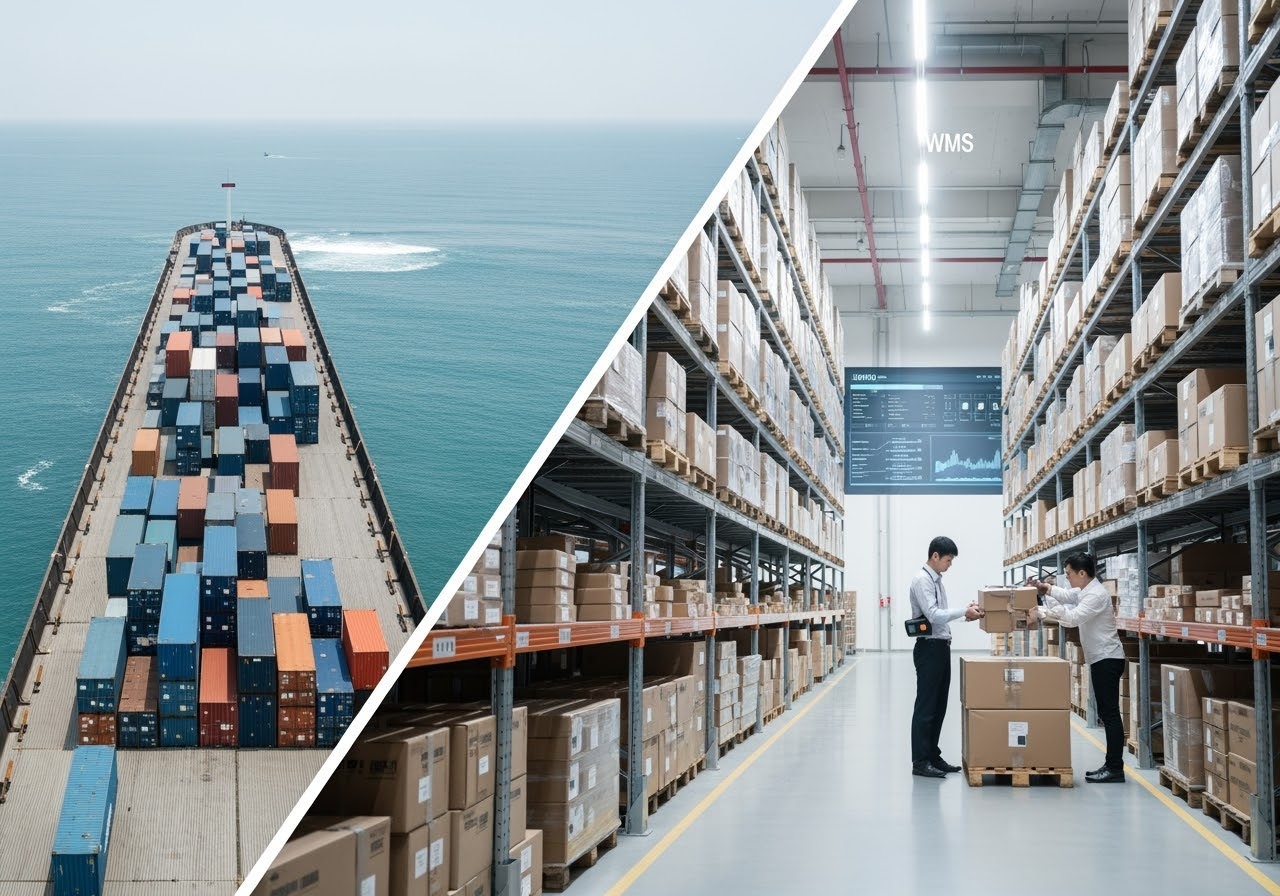
Overseas Warehousing & Fulfillment
Streamline your cross-border e-commerce with our comprehensive overseas warehousing and fulfillment solutions. Reduce shipping times, lower costs, and enhance customer satisfaction.
Get StartedCore Definition
Overseas Warehousing & Fulfillment is a comprehensive cross-border e-commerce logistics solution. It involves sellers pre-shipping products in bulk to warehouses located in target sales countries/regions, and when consumers place orders through the seller's online store (independent site or e-commerce platform), the overseas warehousing service provider processes the order by picking, packing, and delivering directly to end consumers through local logistics channels.

Business Process

First-Mile / Head Haul Logistics
Sellers ship products in bulk from their country (e.g., China) to overseas warehouses via sea, air, rail, or land transport. Professional overseas warehouse service providers typically assist with booking, customs declaration, and clearance services.
Overseas Warehousing
After goods arrive and clear customs, they're transported to the designated overseas warehouse. Warehouse staff unload, count, inspect (optional), label (e.g., SKU codes, warehouse codes), and store the goods according to preset storage logic. Sellers can monitor inventory in real-time through WMS.
Order Processing & Synchronization
When consumers place orders on the seller's e-commerce platform or independent site, order information is automatically or semi-automatically synchronized to the overseas warehouse's WMS or OMS through API interfaces, plugins, or manual imports.
Fulfillment / Pick, Pack, and Ship
After receiving orders, the warehouse system generates picking lists. Operators pick items, verify accuracy, package according to product characteristics and seller requirements (including custom branded packaging if provided), weigh packages, print and attach local logistics labels, and dispatch to local courier partners.
Last-Mile Delivery
Local logistics service providers deliver packages from overseas warehouses to end consumers. Tracking numbers are typically provided so both sellers and buyers can check package status. Major carriers include UPS, FedEx, USPS in the US, and Canada Post, UPS, UniUni in Canada.
After-Sales & Returns Management
If consumers need to return items, products can be returned to the overseas warehouse. The warehouse inspects returned items and processes them according to seller instructions: restocking for resale, disposal, repair, or return to the seller (higher cost). Exchanges or reshipments can be processed directly from the overseas warehouse.
Target Customer Groups
Cross-Border E-commerce Sellers
Sellers on platforms like Amazon, eBay, Wish, AliExpress, or those with independent sites (Shopify, WooCommerce, etc.) looking to improve delivery times and customer experience.
Global Brand Expansion Companies
Businesses looking to establish their brand in target markets and provide a localized shopping experience with fast delivery and easy returns.
Sellers with Established Sales Volume
Businesses with stable sales volumes or products with high potential that can benefit from the advantages of overseas warehousing despite the initial investment.
Core Advantages
Significantly Reduced Delivery Times
Shipping from local warehouses allows consumers to receive products quickly (typically 1-5 days), greatly enhancing the user experience.
Lower Last-Mile Logistics Costs
Local delivery costs are typically much lower than direct cross-border shipping costs from the country of origin.
Enhanced Customer Experience
Fast logistics and convenient return/exchange services help improve conversion rates, repeat purchase rates, and positive reviews.
Improved Product Competitiveness
Offering local shipping services often leads to better product exposure on platforms and makes it easier for consumers to accept higher prices.
Simplified Returns Process
Customers can return products to local warehouses, making processing faster and more convenient, reducing return costs and communication barriers for both sellers and buyers.
Avoid Peak Season Congestion
During peak sales seasons (like Black Friday, Christmas), international logistics can become congested, but overseas warehouse shipping is not affected by this.
Better Seasonal Product Management
Stock can be prepared in advance at overseas warehouses to meet seasonal demand or large promotional activities.
Platform Policy Support
For example, Amazon's FBA is itself an overseas warehouse model, while self-built or third-party overseas warehouses for MFN shipping can also gain platform traffic preference and buyer trust if delivery times meet standards.
Potential Challenges & Costs
Inventory Pressure & Capital Occupation
Need to stock inventory overseas in advance, tying up capital and potentially creating slow-moving inventory risk.
Warehousing Fees
Including warehouse rental fees, management fees, and operation fees, which are ongoing expenses.
First-Mile Logistics Cost & Complexity
Shipping large quantities of goods overseas requires professional logistics operations and incurs certain costs.
Tax & Compliance Issues
Need to understand and comply with the destination country's import duties, consumption taxes (such as VAT, GST), and relevant laws and regulations.
Dependence on Service Providers
The operational efficiency, accuracy, and system stability of service providers directly impact business.
High Product Selection Requirements
Not suitable for all products; more suitable for products with stable sales, moderate volume, high added value, or high requirements for logistics timeliness.
Summary & Outlook
Strategic Value
- Overseas warehousing is an inevitable choice for cross-border e-commerce development, significantly optimizing shopping experience and logistics efficiency through forward logistics deployment
- Despite inventory and capital pressures, the competitive advantages and customer satisfaction improvements are significant strategic benefits
Development Recommendations
- Selecting reliable overseas warehouse service providers is crucial, considering their service capabilities, system stability, and operational efficiency
- Develop appropriate overseas warehousing strategies based on product characteristics, sales scale, and market demand to achieve optimal balance between logistics costs and efficiency
Future Outlook
As cross-border e-commerce continues to evolve and consumer demands for rapid delivery increase, overseas warehousing will play an increasingly crucial role in global supply chains. Through digital transformation, intelligent operations, and network optimization, overseas warehousing services will provide sellers with more efficient and flexible solutions, supporting sustained business growth in international markets.
Ready to Optimize Your Cross-Border Logistics?
Contact us today to learn how our overseas warehousing and fulfillment solutions can help your business reduce shipping times, lower costs, and enhance customer satisfaction.